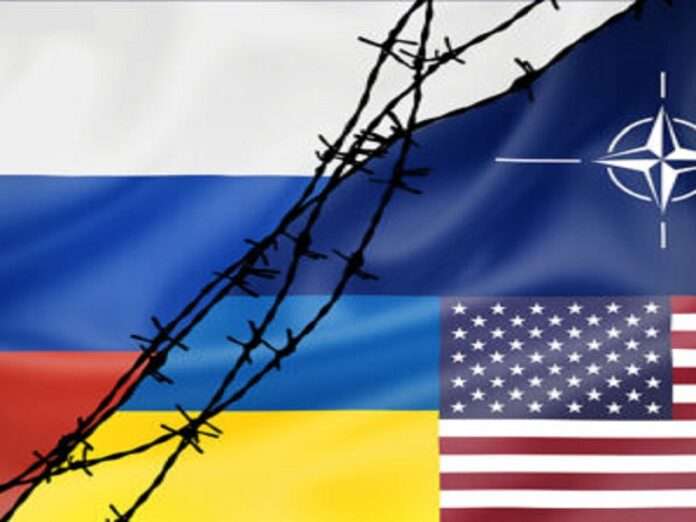All eyes are on NATO ahead of the bloc’s upcoming summit in Vilnius next week as observers wonder whether it’ll lead to any game-changing developments in the alliance’s ties with Ukraine. Secretary General Stoltenberg gave a preview of this event on Friday when sharing what he expects will be agreed to between its existing members and that aspiring one. It really doesn’t amount to anything new, however, as can be seen from his own words below as transcribed by the official NATO website:
“I expect Allied leaders will agree a package with three elements, to bring Ukraine closer to NATO. First, we will agree a multi-year programme of assistance. To ensure full interoperability between the Ukrainian armed forces and NATO. Second, we will upgrade our political ties. By establishing the NATO-Ukraine Council. And third, I expect Allied leaders will reaffirm that Ukraine will become a member of NATO. And unite on how to bring Ukraine closer to its goal.”
The multi-year assistance plan has de facto been in effect for a while already so this part of his latest speech is just confirmation that it’ll remain in place for the indefinite future. Regarding the NATO-Ukraine Council, this is merely the institutionalization of their ties since the start of Russia’s special operation, thus making it nothing new either. And finally, the last part of the package that Stoltenberg predicts will be presented is simply a political – albeit provocative – statement.
All that being the case, this likely outcome will probably disappoint the Ukrainian leadership, which had unrealistically high hopes about there being some game-changing developments in its ties with NATO. They should have foreseen this, however, since there wasn’t ever any credible chance that consensus would be reached on their former Soviet Republic’s formal membership in that bloc. They might even become deeply concerned if they reread what Stoltenberg said and notice a very conspicuous omission.
Remaining committed to “full interoperability” between NATO and Ukraine, institutionalizing their newfound ties, and repeating a political – albeit provocative – statement about its future membership don’t guarantee that the pace, scale, and scope of the bloc’s armed aid to Kiev will continue. The failure of its NATO–backed counteroffensive seemingly led to the alliance souring on the scenario of forever supporting their proxy at the expense of meeting their own minimum national security needs.
Had Ukraine already achieved impressive on-the-ground gains in the run-up to next week’s summit, then Stoltenberg would have unambiguously promised that the pace, scale, and scope of the bloc’s armed aid to Kiev will continue until the latter’s “ultimate victory” in order to keep up the momentum. Instead, that country’s leadership will now have to console itself with perfunctory political pledges and somehow spin this to their people as having supposedly made the past year’s sacrifices worth it.
Zelensky and his clique might also feel that NATO is indirectly signaling its willingness to focus more on the Asia-Pacific at the potential expense of Ukraine’s interests after Stoltenberg announced in the same speech that “we will be joined by the leaders of Australia, New Zealand, Japan and South Korea.” Those members of AUKUS+ are poised to function as NATO’s de facto Asia-Pacific members in leading the bloc’s containment of China, which is planned to be prioritized once the proxy war with Russia wraps up.
About that last-mentioned scenario, President Putin, Foreign Minister Lavrov, and former President-turned -Security-Council-Deputy Medvedev all recently said that the NATO-Russian proxy war could end right away if the US cuts off Kiev’s arms supply. While it’s premature to predict that this will happen anytime soon in spite of Kiev’s NATO-backed counteroffensive failing, it’s worthwhile to note that Belarusian President Lukashenko predicted earlier this week that peace talks might resume in the fall.
He’s sometimes said things that contradicted Russian policy and were thus publicly denied by Kremlin spokesman Peskov, such as when he said that spring 2022’s draft treaty included details about Moscow “leasing” Crimea from Kiev, but he more often than not tends to be pretty reliable. The NATO-Russian “race of logistics”/”war of attrition” that Stoltenberg acknowledged in mid-February seems to be taking a toll on the bloc as suggested by him declining to commit to keeping up its aid to Kiev in his latest speech.
This explains why President Putin, Lavrov, and Medvedev all spoke about possibly freezing the conflict after the resumption of peace talks that could occur if the US cuts off Kiev’s arms supply, thus placing Stoltenberg’s conspicuous omission into context as well as Lukashenko’s prediction. The NATO chief’s announcement that the bloc’s de facto Asia-Pacific members will attend next week’s summit might also signal that it’s preparing to wrap up its proxy war with Russia in order to prioritize containing China.
To be absolutely clear in order for this analysis not to be misinterpreted or spun as meaning something that it doesn’t, there’s no guarantee that the US will cut off Kiev’s arms supply, peace talks will then resume, and the conflict will be successfully frozen. The present piece merely points out that Stoltenberg’s latest speech contains nothing new in terms of ties with Kiev while conspicuously omitting to promise continued arms supplies and curiously inviting Asia-Pacific attendees to this summit.
Anything can always happen to offset the abovementioned trajectory of events, such as Kiev carrying out a false flag provocation against the Zaporozhye Nuclear Power Plant, but so far that does indeed appear to be the direction in which everything is moving for the reasons that were explained. Absent the aforesaid false flag scenario or something like it and taking for granted the continued failure of Kiev’s NATO-backed counteroffensive, there’s thus a real possibility that Lukashenko’s prediction might pan out.







